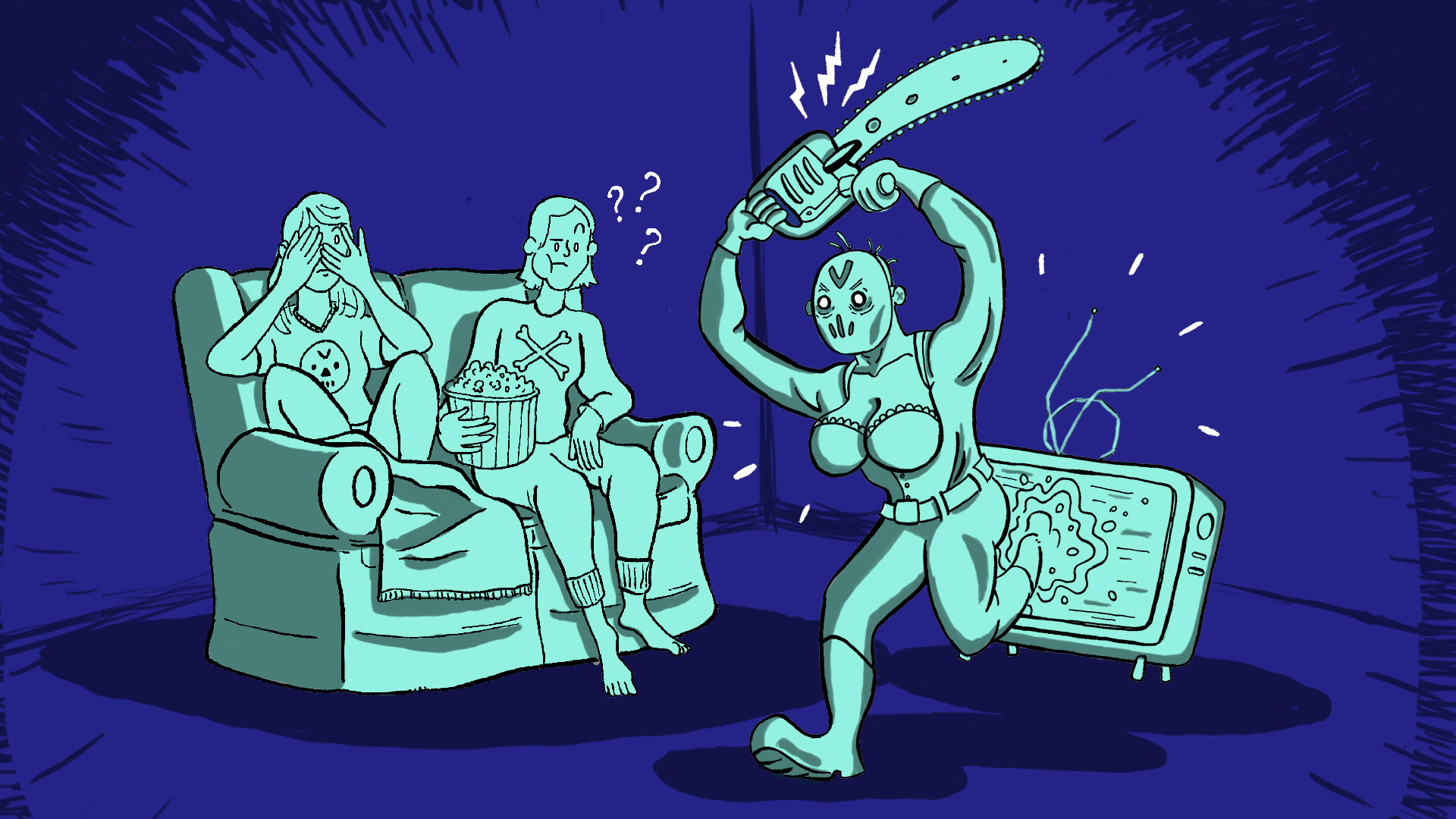
The most supreme sensory experience I had of last year’s EXPO Chicago, Chicago’s extremely well-advertised art fair, was when I accidentally stumbled out of it and into the plastic surgeon’s conference that was also being held at Navy Pier. They gave me a glass of bright green champagne, which I chugged while looking around shiftily before returning to The Art.
This year, Kristin had the brilliant idea of going prepared with EXPO BINGO. We drafted twenty-five categories of things we thought we would be likely to see: Monitors Displayed Diagonally On The Floor, LOL…Plants, and Trash Item That Is Better Version Of Art, for example. Naturally, Hans Ulrich Obrist, the Swiss celebrity curator and a moderator of some of this year’s panel discussions, is at the center of our world.
I think this is what writing criticism of art fairs might look like: a schema of fragmentary descriptions that brings together the lived experience of going to an art fair, the social world of it [the aforementioned scurrying art handlers, running into people, the slow, soul-congealing effect of several hours in the aquarium lights of Navy Pier] with the experience of the art itself, in which there will always be moments of brilliance and lucidity. Well, sometimes moments of brilliance and lucidity. But our purpose in going was no longer to see art that would inspire us, or to purchase art for our respective collections, which totally exist. We just wanted to win at BINGO.
Some of these categories were difficult to decide. While probably many of the things on view would have fit into Category One (“Expensive Thing Made By Many Assistants”), we kept holding off for something really spectacular — I was hoping for something Sarah Sze or Tara Donovan levels of fiddly little parts. Was there stuff we genuinely, unironically, liked? I can’t remember. Was there anything we would hang in our brain[s]? We were tempted by a luscious David Hockney folding screen at Timothy Yarger Fine Art Gallery. Its hinges would, conveniently, allow one to collapse it in one’s brain. But would it invariably spark joy? We wandered on.
We gravitated towards a group of Alex Gardner paintings, which Kristin had seen on Instagram. The paintings were nice, they were weird, black figures with smooth, featureless heads. They had a certain bizarre appeal, but, like many others things we saw, were not as good in person. (For next year, we’ll include the obvious category: Looked Better on Instagram). The carpet was a shaggy white rag rug. As we crossed towards one of the paintings, an enormous seven-foot-tall gallerist in a crisp suit rose from his table and lumbered, Golem-like, forward. He was headed straight towards us, but he was peering down into his phone so intently (Category: Gallerist Avoiding Eye Contact) that I had to perform a dramatic, slow-motion, Capoeira-like torso lean backwards to avoid collision.
Kristin and I looked at each other, and whispered, in unison: “THE MAN.”
– Leah Gallant
* * *
Going to EXPO Chicago has me thinking about malls, which leads to pondering the Crystal Palace. Like the Crystal Palace, the poshest exhibition space in 1851 London, the best mall where I grew up was clad in glass. Technically, it had an enormous skylight and strategically placed windows, but all that natural light is part of what made it seem upscale. This is where important shopping trips would take place, not unlike a destination art fair.
At the mall, we would park and walk through a department store filled with yellow artificial light, briefly look around before exiting to the hub of small retail and fast food, into my beloved blue room. My mom would ask, “Why do you call it the blue room?” “Because everything is blue!” What I meant was this: Southern California sunlight streams in through the glass roof and fills this ’80s-pastel meets Y2K-silver atrium with cool natural light that bounces off every gleaming surface.
My local mall and the Crystal Palace have about the same square footage — around one million — which is over five times larger than EXPO, a good reminder that our local art fair, already overwhelming and difficult to navigate, would happily extend itself into Lake Michigan if it were profitable.
EXPO feels similar to other conventions I have visited and worked at (for running and specialty food, respectively) in that they all claim to be nexuses of industry culture. But due to the cost of participating, they inevitably represent what is predictable in the market, the ideas that already possess commercial appeal. This is, in part, what my fellow EXPO conspirator Leah Gallant and I hoped to show by creating an EXPO Bingo board.
Between searching for Hans Ulrich Obrist lookalikes and checking the price for a glass of Ruinart, we repeatedly observed that much of the art we initially encountered online was disappointing in person. Navy Pier’s Festival Hall does not have any windows to facilitate glittering sunlight, but in our pockets we have screens that glow.
In 1936, the Crystal Palace burned down in a fire that began in the women’s cloakroom. An article in Life Magazine the following month wrote that the fire had “turned the roof of the central transept into a rain of molten glass.” While speculating about destination commerce and the internet’s role in mediating our lives I keep thinking about that description. What does glass look like when it burns?
– Kristin Leigh Hofer








This shit was hilarious.